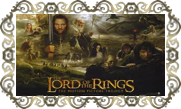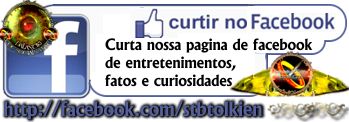

Tolkien, le façonnement d'un monde - vol. 2, Astronomie & Géographie (09.03.14 by Pieter Collier) - Comments
| Didier Willis, the president of Le Dragon de Brume, did it again! He managed to bring together yet another spectacular volume of superb essays on Tolkien, called Tolkien, le façonnement d'un monde - volume 2, Astronomie & Géographie. Slightly bigger then volume 1, Botany and Astronomy, the result is just fascinating. One would wish to be able to understand French or go study it... This second collection continues the exploration undertaken in the previous volume and brings the best essays on astronomy and geography of Middle-earth. Here we find pieces by the best French scholars and translations of top pieces as well. In these essays one digs deep into astronomy, maps of Middle-earth, geographical space, comparison of maps, contradictory sketches, text and description and Tolkien's own notes on the matter. We learn a lot about the geography and geology of Middle-earth. By the second volume here. |
Tolkien, le façonnement d'un monde - volume 2, Astronomie & Géographie
This 356-page book follows Tolkien, le façonnement d'un monde, volume 1 (Botanique & Astronomie), previously published in 2011. It contains 15 essays, 3 relating to astronomy and 12 to geography and geology (in a very broad sense) – 4 of them translated from English.
In astronomy, a translation of Prof. Kristine Larsen’s essay previously published in Tolkien and the Study of His Sources: Critical Essays (McFarland, 2011) discusses Tolkien’s tale of Eärendil and Elwing and unearths the links between the story and the Greek myth of Ceyx and Alcyone.
Alain Lefèvre takes a new look at the red star Frodo observed from his window in Rivendell during the Hunter’s Moon. An astronomer once considered this star to be Sirius, reported as reddish according to Latin and medieval accounts. Other scholars insisted on the allegorical nature of the star, foreshadowing the Eye of Sauron. Commenting Lefèvre comments those previous studies and shows that the planet Mars remains a convincing candidate, finally suggesting a subtle rewording to the French translation of The Lord of the Rings.
Bertrand Bellet discusses the names of months and seasons in Middle-earth, analyses their linguistic forms in Elvish, and draws insightful elements of comparison with several real-world calendars : Roman, Attic, Germanic (incl. Anglo-Saxon, Old German and Icelandic), Finnish, Slavic, Celtic and and eventually the the French Republican Calendar.
In geography, a translation of Jason Fisher’s essay issued in Middle-earth and Beyond: Essays on the World of J. R. R. Tolkien (Cambridge Scholars Publishing, 2010) addresses the “Circles of the World” in Tolkien’s Tale of Arda. He identifies possible sources for this phrase in the Norse kringla heimsins used in the Heimskringla, the Latin orbis terrarum notably found in the Vulgate and the design of medieval T-O maps such as the well-known Hereford mappa mundi.
Gerard Hynes’s essay, translated from Tolkien Studies #9 (WVUP, 2012), questions Tolkien’s geological knowledge and studies possible influences of catastrophist and uniformitarian theories on Tolkien's legendarium. Through geomythology and Wegener’s continental drift as literary and historical backgrounds, Hynes shows the terms between which Tolkien’s geology might have wavered.
Didier Willis points out the large star-shaped island at the bottom of the Cottonian mappa mundi. Located near the Pillars of Hercules, its recognizable shape reminds us of Númenor. Illustrating links between the once wealthy and renowned city of Cádiz and the myth of Atlantis, the essay presents various descriptions of the Anglo-Saxon map and its curious island, and briefly examines the pentangle pattern.
Priscille Henon studies various images of the Labyrinth in Tolkien’s Lord of the Rings in light of their mythological and philosophical aspects, and shows how patterns of quest, initiation, transcendence, death and transformation may apply to the underground realm of Moria, the Dead Marshes and the Paths of the Dead.
William A.S. Sarjeant’s article on the geology of Middle-earth’ (The Tolkien Society / Mythopoeic Press, 1995) is translated into French for the first time, including its maps and additional editorial notes explaining the technical vocabulary.
Jean-Rodolphe Turlin provides a description of the Three-Farthing Stone in the Shire and explains possible British sources for this boundary stone, especially in the West Midlands where Tolkien once lived. Following previous studies by Shippey, Hooker and Nagel, he shows how this remarkable monument might be a reminiscence of the rural English landscape.
With maps and figures, Didier Willis reconstructs a general map of Beleriand and Eriador, improving upon his previous works on this topic. He expands upon the sea of Rhûn and the possible latitude of Númenor – with a new attempt at locating the famous Tolkienian Atlantis, based on vines growing on the isle and the adequate climatological conditions for viticulture.
In the footsteps of his book Promenades au pays des Hobbits (2012), Jean-Rodolphe Turlin proposes a survey of the maps of the Shire, from the drafts to the published versions. He also discusses their cartographical representation at different scales and their translations in several languages.
Eric Flieller questions the location of Rhosgobel and the nature of its strange inhabitant, the brown wizard Radagast. Noting the absence of Rhosgobel onThe Hobbit’s map and possible inconsistencies between the texts and the earlier draft map, he analyses the etymology of Rhosgobel, its relation to the Carrock(s), the towns of the Woodmen in Mirkwood and various sources of inspiration for Radagast, from the Slavic god Radegast to the Merlinus Sylvestris and Saint Francis of Assisi.
Didier Willis devotes two brief essays to Borlas of Pen-arduin and the Lampwrights’ Street in Minas Tirith, providing interpretations for these names and clues to the characteristics of these places
Damien Bador concludes this collection of essays with the first part of a study on monoliths in Tolkien’s legendarium, focused on the Carrock(s) and the Stone of Erech. Both have apparent counterparts in the primary world and show many signs of revision while Tolkien was elaborating the geography of his fictional world – they may be regarded as a metaphor of his creative process.
About "Le Dragon de Brume"
"Hiswelókë - Le Dragon de Brume" started as a personal page on the Web, back in 1997, where Didier Willis wanted to share his passion and interest in Tolkien's legendarium. Over the years, the website received a few contributions from other Tolkien fans and was hosted on one of the main French Tolkienian website at the time, with once a very active forum, where several Tolkien affinados wove close ties of frienship.
After more than ten years of presence on the Web, they felt that their articles on J. R. R. Tolkien's wonderful creation could possibly deserve a better visibility and be distributed in the form of printed books. Traditional publishers may be reluctant to publish collections of essays, especially when they are the work of Tolkien enthusiasts, primarily made for other Tolkien enthusiasts. Fundamentally attached to "paper" and fine typography, they nevertheless thought that it should certainly be possible to produce good quality articles and essays and to provide them to interested readers in printed form, so that they may store them in their collection of Tolkien-related books and also read them in a more pleasant way than on the Web.
Therefore, "Le Dragon de Brume" a non-profit association was created (under French law 1901), and the rest is now history.
| Title: Tolkien, le façonnement d'un monde - volume 2, Astronomie & GéographieEditor: Didier WillisPublisher: Le Dragon de BrumePublication Date: March, 2014Type: paperback, 356 pages ISBN-10: 2-9539896-2-5ISBN-13: 978-2-9539896-2-5 |
Spread the news about this J.R.R. Tolkien article:














